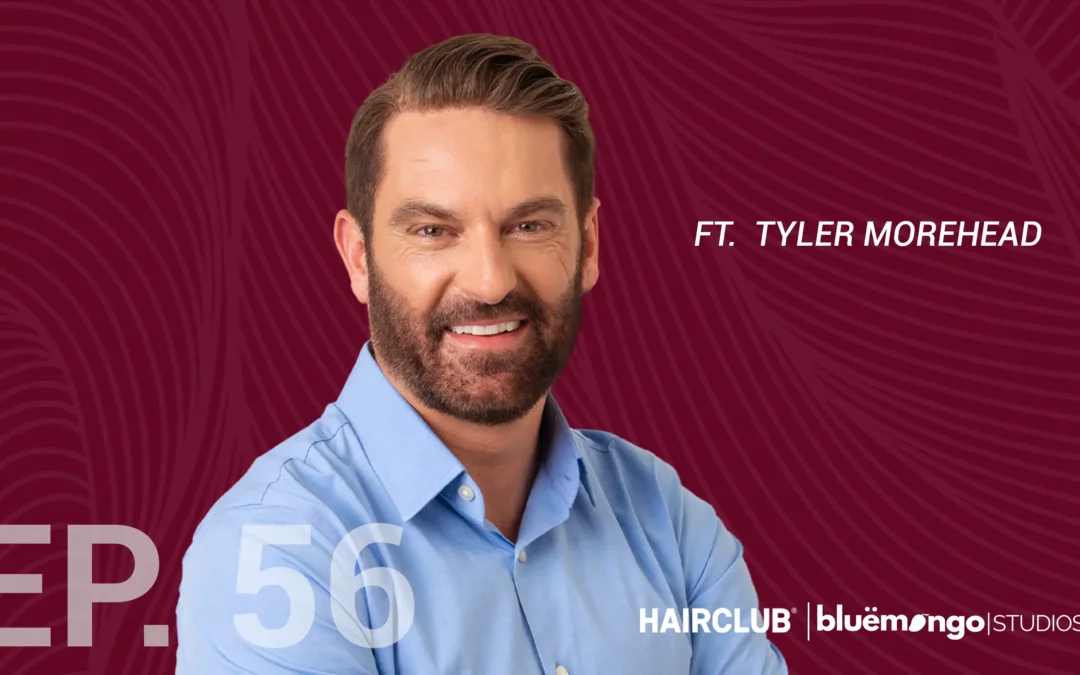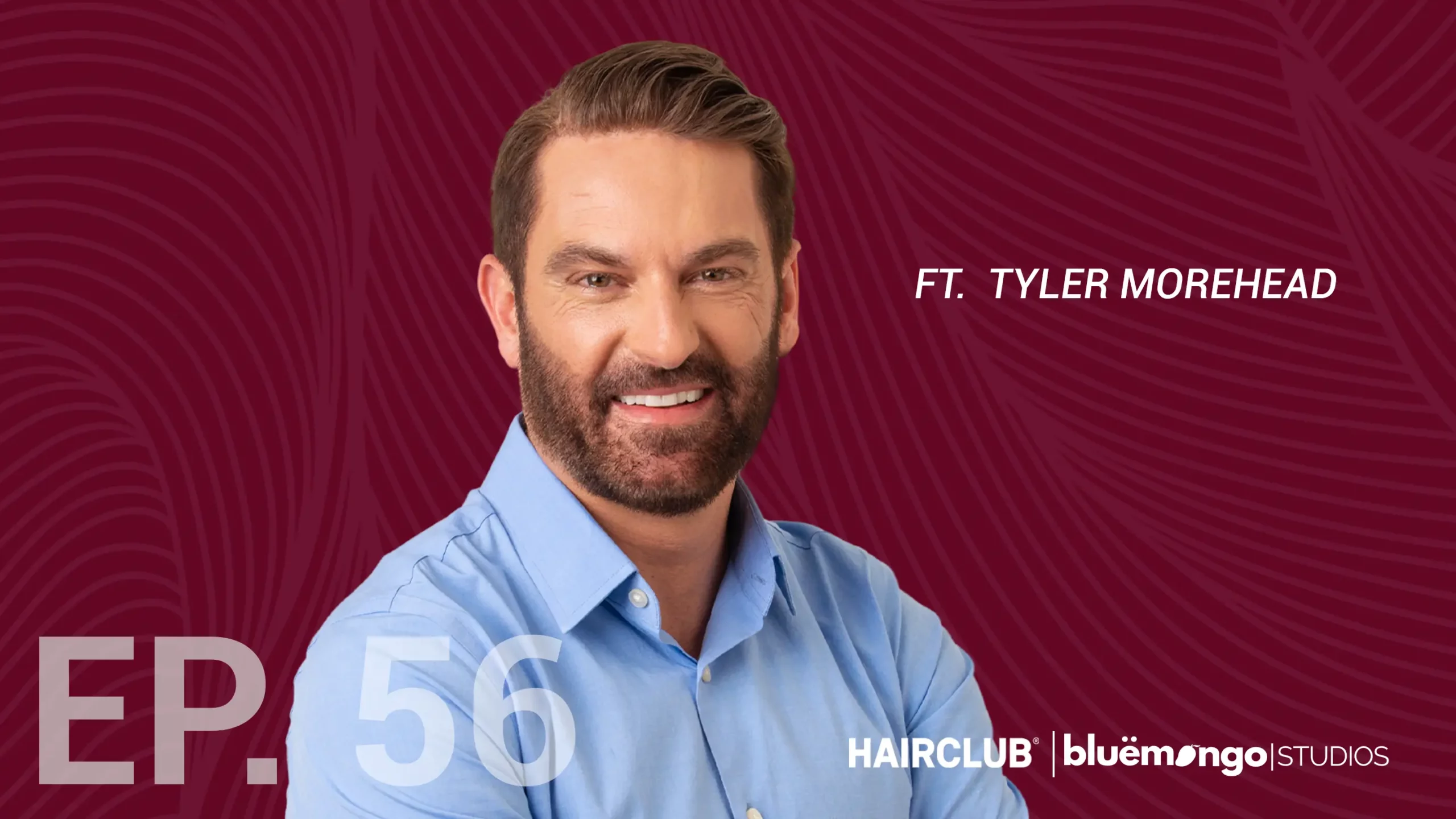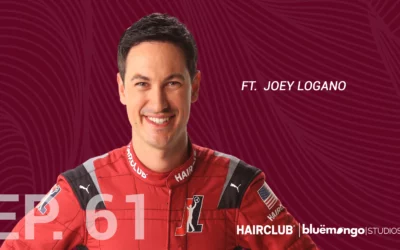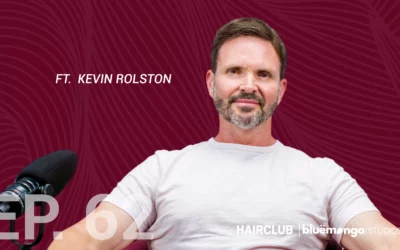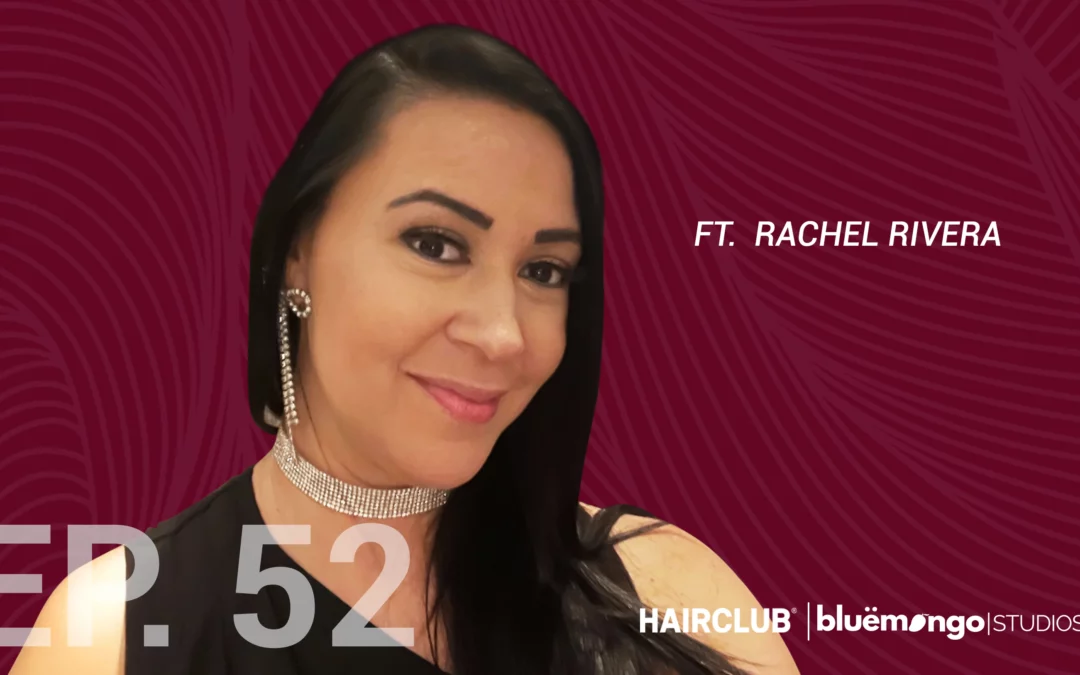Tyler Morehead [00:00:02]:
You know, when I went to HairClub and I got the hair, I remember the very second I looked in the mirror, when they were done and I looked at it, it was that feeling of like, there’s that dude I haven’t seen in, like, 15 years. And my immediate thought was, like, well, you know, I mean, it’s not real hair. I get that. And there’s a part of that that’s like, God, you know, initially, I never wanted to do it. And there are. Sometimes I’m like, I wish I’d just get my hair back, but if I can’t, this is by far the best solution that I’ve ever come across, ever, over that long period of time.
Kevin Rolston [00:00:44]:
Welcome to HairPod, the podcast where you get to hear real people talk about their hair journeys. I’m your host, Kevin Rolston, and each week I get to interview people from different walks of life whose lives have been touched by hair loss in some form or fashion. Many of our guests have experienced hair loss themselves and found a way to get their confidence and their hair back. Today we’re talking with Tyler Morehead, a director, producer, and writer who spent years working in front of and behind the camera. You might know him from his early days in acting or commercials or maybe even soap operas like Days of Our Lives. But what you might not know is that Tyler’s journey with hair loss started in his early 20s, right as his career in Hollywood was taking off. Like so many of us, he tried everything he could to fight it. And after plenty of searching, he finally found a solution that works.
Kevin Rolston [00:01:33]:
Now he’s got a successful career behind the camera and is even a model for HairClub.
Tyler Morehead [00:01:44]:
Well, the model with HairClub, that kind of came out of the blue one day, so I don’t really take that title too often. Besides the fact that when it’s handed to me, this is one of those days. But I’ve been really thrilled to do it, that’s for sure. But otherwise, I started a production company a few years ago and working on a lot of films, some documentaries, mostly right now. Okay. So I think that since COVID you know, we’ve kind of had to redo everything. I’ve learned how to do everything on my.
Kevin Rolston [00:02:10]:
That right.
Tyler Morehead [00:02:12]:
You know, for the most part. But now serious, I have a great career. We’ve got a documentary that we’re about to release on Amazon prime, and so we’ve got. Got some good things happening. But the writer, director, producer thing, that canal falls into that. I’ll take whatever titles that, you know, I have to Take in order to get this done.
Kevin Rolston [00:02:29]:
It’s all good, right? Exactly.
Tyler Morehead [00:02:32]:
Great. So I can’t complain.
Kevin Rolston [00:02:33]:
Yeah, if you’re working, it’s fantastic. How much work do you do in front of the camera?
Tyler Morehead [00:02:38]:
You know, back in my early days, I used to do quite a bit. That’s how I started. Wasn’t moved out to Hollywood. I got some great stuff, you know, and you know, a lot of soap opera work, a lot of commercial work.
Kevin Rolston [00:02:50]:
Good for you.
Tyler Morehead [00:02:51]:
But you know, it’s a tough industry. So once I kind of got a taste of stuff behind the camera, that really appealed to me a lot too. So I, I kind of went with it.
Kevin Rolston [00:02:59]:
Now I’ve grown up with the soap operas. I’ve seen them since I was a little kid. I’ve watched the ones my wife has watched. And a lot of times people stay on soap operas for a really long time. I mean, you can make that your entire career. And a lot of people do, they’re there for 40 or 60 or, you know, sometimes like 80 years it feels like. And they wind up dying in the job. And my question is, is we age? That’s just a, you know, normal part of life.
Kevin Rolston [00:03:25]:
But the one thing I’ve noticed is people in the soap operas, they don’t age as much. And a big part of that is I don’t think I’ve ever seen one person on a soap opera that has a Dr. Phil haircut. Am I wrong in that? I mean, do they all not have ideal haircuts?
Tyler Morehead [00:03:40]:
I would say you’re probably not wrong. I certainly don’t have an answer for that. You figure that out, you let me know. But yeah, I think you’re pretty spot on when you say that. It’s pretty entertaining.
Kevin Rolston [00:03:50]:
So what are people who like, if you do a soap opera, what do you do for your hair? Give me some of the Hollywood secrets. So there are so many people that have hair that’s unrealistic to the way middle America looks or people are not in Hollywood look. And what are these people doing to have that ideal head of hair in Hollywood?
Tyler Morehead [00:04:09]:
You know, I, I think that what I’ve done here, that’s got to be part of it. I think that I’ve seen a lot of people talking about topical things that they use and that, that sort of thing. But I think Hollywood’s just a different animal. I mean, it’s hard to compare ourselves to that realistically because, you know, that’s, that’s camera ready stuff. So it’s gotta always look good. For me when I was. And hopefully I’m not saying too much, but I had a pretty decent little role on Days of Our Lives. I didn’t.
Kevin Rolston [00:04:35]:
I love Days of Our Lives. That’s so awesome.
Tyler Morehead [00:04:38]:
I didn’t really have ever have hair and makeup. I usually had to do that all on my own. But I did have a girl that was doing my hair and makeup there, and she introduced me to, like, a hair fiber. That’s when my hair really started thinning out. And she used that and I was hooked at that point. You know, it’s kind of like this instant kind of thick head of hair, but, you know, and I use that for quite a while until, you know, I just decided that wanted to find something else, which has led me to where I am today.
Kevin Rolston [00:05:09]:
Most of us don’t have the tools of Hollywood at our fingertips. We don’t have a team of stylists ready to fix our hair. Under the glow of the studio lights, hair loss often feels like a lonely battle, one you’re forced to figure out on your own. But imagine being just 22 years old, stepping into the spotlight for the first time and realizing you, your hair is already starting to thin. That’s what happened to Tyler. Just as he was getting to start in the entertainment industry, hair loss showed up uninvited under the harsh glare of cameras. It wasn’t just about looks. It was about confidence, opportunity, and the pressure to measure up in an industry where appearances are everything.
Tyler Morehead [00:05:53]:
I noticed it right after college. Right after college, I moved to New York. That’s where the acting all started for me. You know, it was. I was losing hair pretty normally. I think it wasn’t super bad. By the time I got to LA and by the time I kind of started getting some roles and I’ll use the Days of Our Lives things, the example, I mean, when they introduced me to that, well, at that point, I think I tried just about everything, like. Like a lot of people.
Tyler Morehead [00:06:18]:
And I. Nothing worked for me. Not saying that stuff doesn’t work me.
Kevin Rolston [00:06:23]:
No, you’re right.
Tyler Morehead [00:06:23]:
But it didn’t work for me. But, you know, it was just kind of this progression where, you know, then once I use that. Back to your point, I started using it on my own and on another shoot, I was on set and that director pulled me to the side and said, you know, we need to put something in your hair. It just looks so dusty or looks like powder. It doesn’t look realistic. So that’s when I realized even what I was using then, it had its challenges and it’s it’s downside, too, and I think a lot like you that’s. Eventually I found hair club, wishing I would have found it a lot sooner because I think it would have been a whole different ball game on that end. It certainly would have been a lot less stressful, a lot less anxiety, especially when you’re in front of a camera.
Kevin Rolston [00:07:02]:
Yeah, No, I mean, those. The lights are unforgiving. And when you’ve got somebody that’s their job to pick apart your appearance and they’re going in on how your hair looks, it’s a real tough place to be. Now, I’ve had many different places. Tell me, what age were you when you started to notice? Because for me, my first notice of hair loss that I needed to deal with was at the age of 25. Where did you start? What did you do at that point? Then what happened in your 30s? And, you know, onward from there.
Tyler Morehead [00:07:31]:
I think, for me, I’m trying to think it was right after college. So I would have been like, 22. Okay. Yeah, been 22. And I think that I lost the majority of the hair within those first two or three years. That’s when I saw the biggest change. After that, it just stopped. It didn’t.
Tyler Morehead [00:07:46]:
You know, I wasn’t losing as much, but it was just kind of gradual. I could see my hairline kind of going away more and more.
Kevin Rolston [00:07:52]:
Yeah, it’s. You know. And I’ll speak. Yeah. In a weird. It’s. Hair loss is an odd thing. And it seems like it has paces where you notice it may be in your early or mid-20s, like you and I both were.
Kevin Rolston [00:08:06]:
And then you have it. You do something that you think addresses it, and you’re good for five to 10 years. And it’s odd. Late 20s, early 30s was fine. It probably wasn’t until my mid-30s that I picked up again and noticed and said, okay, this is now a new problem you gotta deal with. Were you kind of the same way where it. It seemed like you addressed it. You’re good for a decade, then you had to come up with another solution?
Tyler Morehead [00:08:30]:
Yeah, yeah, absolutely. And I think for me, you know, just doing what I was trying to do out in Hollywood and that it really wore on me a lot more because here I am competing. It’s these dudes that are, like, perfect in about every.
Kevin Rolston [00:08:43]:
I know. It’s always the hair. The hair looks always so amazing. Doesn’t soap opera stars have the best hair ever?
Tyler Morehead [00:08:49]:
Yeah. So, you know, I think that it was that progression, like you’re talking about, and Then there would be times when it wouldn’t bother me as much or I didn’t think it did. It kind of desensitized me, I think, to the idea that, well, you know, I’m losing my hair. Just gonna have to accept that. And I think I got a little desensitized until one day I thought, why don’t I just shave my head? And, yeah, dudes are doing. I did that, and I realized how miserable I was, so.
Kevin Rolston [00:09:15]:
Right. Right.
Tyler Morehead [00:09:16]:
That’s when. And I got to give my mom a lot of credit. She’s the one that said, why don’t you call this hair club? You know, these hair club guys. Mom sparked the whole thing. And I know that because it happened on Mother’s Day. I did it on Mother’s Day.
Kevin Rolston [00:09:29]:
Wow.
Tyler Morehead [00:09:31]:
My mom, I was wishing her a happy Mother’s Day. The very first thing out of her mouth, being a mom, what’s wrong? And I’m like, nothing. She’s like, something’s wrong. What’s going on?
Kevin Rolston [00:09:41]:
So I told her, yeah, she could tell, baby.
Tyler Morehead [00:09:45]:
Dude. I know, but that descent, you know, being desensitized to it. And then just one little thing would be like, yeah, you know, I got to do something. For me, that’s the way it was. Like, I would go through these little eras, but then I would be brought right back to that. Like, man, this really sucks. Like, I don’t know why I’m lucky or unlucky one to do this, but. Or deal with this, but essentially, you’re back to the same thing.
Tyler Morehead [00:10:06]:
I’m like, I just want to do something about it.
Kevin Rolston [00:10:13]:
Everyone who’s dealt with hair loss has that moment. The low point, the day you look into the mirror and you think, I can’t ignore this anymore. Maybe it’s when a photo catches you off guard or when somebody makes a comment that hits a little too close to home. For Tyler, that moment came when he decided to shave his head. It felt like the only option he had left, like, waving the white flag. But instead of feeling free or confident, it left him feeling worse, like he’d lost more than just his hair. It’s a feeling many of us know all too well. When you hit that point of frustration and you just want to feel like yourself again.
Tyler Morehead [00:10:53]:
There really weren’t a lot of options. And like I said, that deal with my mom on Mother’s Day, that was the eye opener, I think, more than anything. But I just knew I wanted to do something. I didn’t want to. I think shaving my head, I I didn’t think I, you know, didn’t look bad, but I just didn’t want to do that. I really wanted to have some hair of some kind.
Kevin Rolston [00:11:11]:
I did okay.
Tyler Morehead [00:11:12]:
I did better doing the tattoo thing where you shave it and they do the tattoo stuff, but, you know, they make it look like you. But I don’t know, there was something about that, too. I’m like, that’s just going too far. Like, I don’t want to do it, so. Right. You know, when I went to HairClub and I got the hair, I. I remember the very second I looked in the mirror when they were done and I looked at it, it was that feeling of like, there’s that dude I haven’t seen in, like, 15.
Kevin Rolston [00:11:37]:
Yeah.
Tyler Morehead [00:11:37]:
Yeah. It had been like 15 years. And my immediate thought was, like, well, you know, I mean, it’s not real hair. I get that. And there’s a part of that that’s like, God, you know, initially I never wanted to do it. And there are. Sometimes I’m like, I wish I just get my hair back, but if I can’t, this is by far the best solution that I’ve ever come across ever, over that long period of time. Yeah.
Kevin Rolston [00:11:58]:
You stated a couple things there that to me are interesting. First of all, you to me are confirming about the 15 year. And that’s how I feel when I don’t have my hair on. And when I do, it is about a 15 year difference on what you would think my age might be. I feel that’s my own perception. The other thing that, you know, I love and people who don’t understand this is that when you do a hair system, you are doing real human hair with the exact feel it’s not something synthetic. And I’m looking right now, and people are not actually able to see your visual right now, Tyler, is you look like you have a very natural head of hair. Tell me about how you think the feel is, the color is, and the texture is.
Kevin Rolston [00:12:41]:
Because you’re like me. You have a little bit of gray on the side, and it blends in perfectly, going all the way up to the top. And that’s something that is done with, you know, people who do hair systems really well, is there’s a perfect match. It shouldn’t be a dark top, a gray side where you can tell you’ve got something that’s sitting on the top, because that doesn’t fling anybody at all. I’m looking at you, and you look like you have a natural head of hair. So describe to me a Little bit about how you get it done and how you feel about your own hair.
Tyler Morehead [00:13:10]:
Wow, Cool. Thanks. Yeah, it’s interesting you would bring that up because, like, my beard, I stopped coloring my beard here not too long ago. I realized I’m like, okay, I can’t win them all, so I’m just going.
Kevin Rolston [00:13:21]:
To leave this one. I think that’s the right move. I’m doing the same thing people were telling me, like, diet, but I’m like, no, I just. I don’t think it looks right.
Tyler Morehead [00:13:29]:
It’s.
Kevin Rolston [00:13:30]:
You know what? Beards are very similar to the hair where I feel like the same way you can tell when guys dye their beard and when it’s not done right, especially. And guys that are using a hair system, a toupee, whatever it might be called in your world, you can tell when they’re at doing it because it’s not colored right. And they’re just things that are off with it. It’s not natural.
Tyler Morehead [00:13:51]:
Well, when I did that, you know, I realized then how gray my beard really was and how gray my sides really were because I coloring them for so long, like the same amount of time, probably 15 years. But I didn’t realize that it was like almost solid gray. So I went into the HairClub, you know, my center that I go to here in Florida told them, you know, I’m going to go ahead and do this from now on. And they went ahead and changed a lot of the color in the hair. Yeah, I can’t say what they did exactly, but I do know is they’ve added more gray in here on the sides. I’m like, I can’t believe how real that looks. We were just out at the beach here a couple of weeks ago, my wife and I, and I saw her out taking pictures of me, and she was commenting about how good the color looked with the beard and the grain, how they wanted that wind and for her to do that says a lot, but she was really commenting on it. So I realized that, you know, things I didn’t know you could kind of do was adding gray and just certain areas of it to help blend in your.
Tyler Morehead [00:14:42]:
I didn’t know you could do that until just recently, but they did it and I’ve been really happy with it. It’s only been three weeks or something that that’s been the case, but okay. But the beard, I did want keep that way. You know, I. I just decided it was time. You know, I just had a birthday and I turned a certain age. I’m like, it’s Just time I stop and I was at a party, and a good friend of mine, Wynonna Judd, she, you know, I told her, I’m like, you know, I’m really on the fence with it. I don’t know.
Tyler Morehead [00:15:07]:
And she just looked at me and said, dude, it’s how God made you. Just go with it. And, yeah, that was a moment where I’m like, yeah, that’s what I’m gonna do. So I did. Hopefully she’s not wrong. Hopefully I’m not wrong.
Kevin Rolston [00:15:18]:
But now, you know what?
Kevin Rolston [00:15:19]:
Now you’re in the.
Tyler Morehead [00:15:21]:
That came into play. You know, to answer your question, I’m really happy. Right.
Kevin Rolston [00:15:24]:
And now you’re in the silver fox category.
Tyler Morehead [00:15:27]:
Dude, I hope. Well, I hope so. I know I’m silver. I don’t know about the fox category.
Kevin Rolston [00:15:31]:
But, you know, I hope so.
Kevin Rolston [00:15:38]:
At the end of the day, it’s about feeling comfortable, not just in your hair, but in yourself. I mean, that’s what we’re all really looking for, right? To look in the mirror and feel like you again. For Tyler, finding the right solution meant getting back to that place of comfort where he didn’t have to second guess how he looked or feel anxious stepping out the door. And when you live an active life, that confidence matters even more. Whether it’s hitting the beach, jumping on a jetski, or even catching waves like Tyler used to back in California, the last thing you want to worry about is your hair. That’s when you know that you’ve found something that works when you’re doing what you love, feeling and looking your best and not thinking twice about it. I asked Tyler if he ever worries about how his hair is going to look when he’s out on the beach living life to the fullest.
Tyler Morehead [00:16:31]:
You know, at first, when I got it. Yeah. But never, not even once. And I’ve had the hair, you know, I guess it’s been about 12 years now, but my wife and I are super active, you know, down here. We bow jets. Back in California, back in the day, I surfed and, you know, there were. I’d get rocked by some serious waves and never once did it ever even come close to being an issue. So.
Tyler Morehead [00:16:55]:
Yeah, no, you remember an issue.
Kevin Rolston [00:16:57]:
It sounds like, you know, honestly, you had to just build up some confidence with it, right?
Tyler Morehead [00:17:00]:
Yeah.
Kevin Rolston [00:17:00]:
Take some trial runs and say, okay, this thing’s legit. It’s going to stay with me. It’s going to look natural all the way through.
Tyler Morehead [00:17:06]:
Yeah, Yeah. I just. Just had to experience it. That was better, you know, once you, once you, you know, that confidence, I think, or whatever you want to call it, it’s, it’s pretty immediate. You’ll realize it’s not going anywhere.
Kevin Rolston [00:17:17]:
So could you ever see a point where you would say, you know what, I’ve had enough, it’s time for me to move on, do something different? Or do you think this is going to be a permanent part of your life forever?
Tyler Morehead [00:17:26]:
I think it’s pretty permanent. You know, I’ve, I’ve had that thought, what you just said. You know, I’ve wondered if. What if when I hit my 70s or my 80s, am I going to finally get to the point where I’m sick of this, But I don’t think I will. I think there’s just something about it that I’m comfortable with and I like. And you know, it’s kind of like I don’t want to give it up either. But no, I think it’s pretty permanent, you know? You know, I don’t know. I have no idea what life is going to serve up, but.
Kevin Rolston [00:17:49]:
Right, right.
Tyler Morehead [00:17:50]:
Yeah, part of like, no, it’s permanent. My wife and I even talk about it, you know, and she said she’d prefer having it and me keeping it as, as long as possible, so I’ll definitely keep.
Kevin Rolston [00:18:00]:
I think so too. You know, I, I feel the same way. I mean, you know, you and I, I deal with the media as well and so, you know, perception. But even if you didn’t, let’s strip that away because most people are not dealing with what you and I deal with. Media being out there where people are going to comment on us and seeing critique. And to me, the other things that I love about is one, your own self esteem. And I’ve noticed that you carry yourself different when you have that kind of confidence. You have that self esteem and, and I think that’s important.
Kevin Rolston [00:18:29]:
Do you feel the same way? I mean, aside from your industry just being you, Tyler, a guy without that. Do you feel like the hair gives you more confidence?
Tyler Morehead [00:18:37]:
Oh, yeah, absolutely. Well, it definitely just puts you back in that place how you were before I started losing there. And like I said that that very first second that I looked in the mirror when they put the hair on the first time. Right. I know what he looks like. I don’t think I’ll ever be able to explain that to anybody, but you’ll know it when that happens to you. So it was from that point on. And I’ve got pictures of the before and after and you can see the look on my face.
Tyler Morehead [00:19:01]:
You know, that whatever in my eye or whatever, I could just see it. That difference.
Kevin Rolston [00:19:05]:
Yeah.
Tyler Morehead [00:19:06]:
That’s what has really shaped, you know, going on to the question, you just said, are you going to keep it for forever? Is it permanent? I’m like, yeah. Because I’ll always remember back that first day what it was like to get hair back again.
Kevin Rolston [00:19:20]:
Confidence isn’t just about looking a certain way. It’s about feeling good in your own skin, whatever that looks like for you. For some people, that means shaving their head and owning it. For others, it means finding a solution that helps them feel like themselves again. There’s no one size fits all answer. When it comes to hair loss, it’s about what works for you. Tyler found something that gave him his confidence back and it changed the way he lives his life. You never know.
Kevin Rolston [00:19:46]:
If you’re thinking about doing something for yourself, just give it a try. It might not just change your hair, it might change how you feel every time you step out into the world. For more inspirational stories and words of wisdom from people who have been through hair loss, make sure to subscribe to the show on your favorite podcast app. Thanks for listening to another episode of hairpod. Check us out at HairClub on Instagram or search Harepod on Facebook to continue the conversation. If you know someone who could benefit from hearing this episode, we would love it if you would share it with us.
Kevin Rolston [00:20:18]:
Them.
Kevin Rolston [00:20:18]:
If you’re enjoying the show, consider leaving us a rating and review on Apple Podcasts or your favorite podcast app. We also have a website. Check it out by going to podcast.hairclub.com we’re here to build people up and share real stories so people experiencing hair loss feel a little bit less alone. And when you share, review and subscribe, it helps us do just that. So thank you until next.
